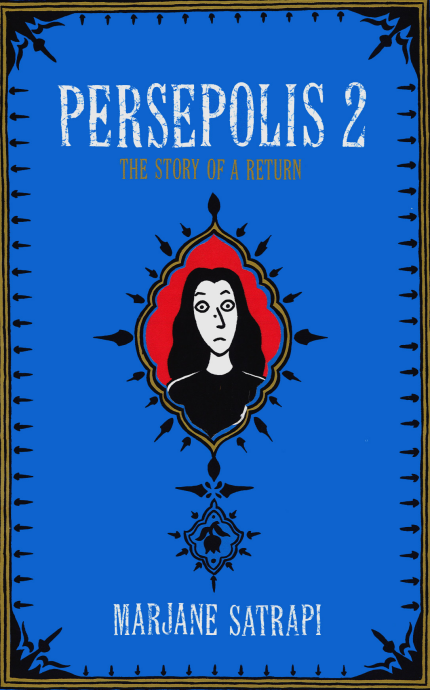Persepolis 2: The Story of a Return, by Marjane Satrapi

Persepolis 2: The Story of a Return by Marjane Satrapi
My rating: 5 of 5 stars
Earlier this year, I read the first part of Marjane Satrapi’s memoirs, the graphic novel “Persepolis: The Story of a Childhood”. Now, I felt, was a good time to revisit her story that in this second part begins with her difficult years in Austria.
In Vienna, Marjane feels isolated: Her experiences living in Vienna as a young adult highlight the challenges of being a foreigner in a new and unfamiliar culture. Marjane’s struggles with language, cultural norms, and social expectations make her feel like an outsider.
Her experiences in Vienna also highlight the cultural differences between Iran and the West, and the challenges of navigating those differences as a young person. Marjane’s rebellious streak and her desire to fit in with her Western peers often clash with her Iranian upbringing and cultural values, leading to feelings of confusion and isolation.
Considering she lived there during the early 80s, a time during which conservatism, xenophobia and intolerance really thrived again, it’s no wonder she had some horrible experiences and, ultimately, decided to return to Iran.
Hardly at what she considered home, though, Marjane has to face the challenges of returning to a familiar but changed culture: Her experiences living abroad had given her a new perspective on her Iranian upbringing, and she struggles to reconcile her Western-influenced worldview with the traditional values and expectations of Iranian society. Her experiences with romantic relationships, gender roles, and political activism all highlight the tensions between her personal beliefs and the expectations of Iranian society.
Marjane’s candid and honest portrayal of her experiences also helps to demystify Iran and Iranian culture for readers – like myself – who are not familiar with it. By sharing her personal experiences and perspectives, Marjane allows us to see Iran as a complex and multifaceted society, rather than a monolithic or exoticized entity. This helps to bridge cultural divides and promote greater understanding and empathy between different cultures.
I also appreciate Satrapi’s unflinching honesty in her storytelling. She doesn’t shy away from difficult or uncomfortable subjects, and her willingness to share her personal experiences and emotions make the story all the more authentic and relatable. Her portrayal of the complexities of Iranian society and the impact of political upheaval on individuals and families is both nuanced and insightful.
Another of the strengths of “Persepolis 2” is Satrapi’s unique graphic style, which is both simple and expressive. Her use of black and white illustrations adds to the starkness of the story, and the minimalism of the drawings allows the reader to focus on the emotions and experiences of the characters.
Overall, “Persepolis 2” is a powerful and moving graphic novel that offers a unique perspective on Iranian history and culture, while also exploring universal themes of identity, belonging, and resilience.
Five out of five stars.
Ceterum censeo Putin esse delendam
View all my reviews